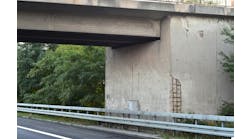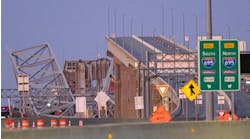By: Carissa Schively Slotterback, Ph.D., AICP, and Cindy Zerger
|
A growing number of cities, counties and regions are focusing on complete streets as a way to more fully account for the range of modes and users within the transportation system. |
Definitions of complete streets abound, with many communities and agencies developing specific versions tailored to their contexts and priorities, though the focus remains generally on accounting for multiple modes and users. This definition of complete streets from the state of Minnesota offers an example:
Complete streets is “the planning, scoping, design, implementation, operation, and maintenance of roads in order to reasonably address the safety and accessibility needs of users of all ages and abilities. Complete streets considers the needs of motorists, pedestrians, transit users and vehicles, bicyclists, commercial and emergency vehicles moving along and across roads, intersections and crossing in a manner that is sensitive to the local context and recognizes that the needs vary in urban, suburban, and rural settings.” (MN State Statutes 2008, §162.02, Sub. 3a)
As a growing number of jurisdictions move to advance complete streets in their own transportation, development pattern and political contexts, many of them are focusing on the physical and design characteristics of streets and rights-of-way. Streets serve a wide range of vehicles and users—automobiles, bicycles, freight vehicles, pedestrians, emergency vehicles, wheelchairs, motorcycles, scooters and transit vehicles. Each of the users of the street have different expectations for how it performs for them and how it might be designed to meet their needs. In addition to serving people, streets serve as public space and infrastructure that offer a framework for development, establishing the limitations, as well as the prospects for adjacent land use.
Rerouting strategy
Based on forthcoming research being conducted at the University of Minnesota, with funding from the Minnesota Department of Transportation and the Minnesota Local Road Research Board, we explored opportunities to rethink the way that we design and construct streets. Drawing from a diverse set of community cases addressed in our study, we highlighted innovations in complete streets that are occurring in real communities under widely ranging conditions. The following are three communities that have taken very different approaches to rethinking streets. Among these communities is Charlotte, N.C., which is rethinking the classification of streets and explicitly accounting for the land-use context as part of transportation planning and design. Second, Boulder, Colo., is taking a network approach that shifts the traditional hierarchy of transportation modes. Finally, Madison, Wis., is innovating in street design by testing diverse approaches to integrating bicyclists and pedestrians within the roadway network.
Charlotte, N.C.
This fast-growing community of more than 1.7 million people also is a very large community in terms of its geographic scale at 298 square miles. The city thus encompasses the downtown urban core, adjacent former streetcar suburbs, new transit corridors and suburban and exurban development at the edge of the community.
The community’s large size contributes to a diverse transportation and land-use context. As Charlotte has moved to implement complete streets in the community, the city is rethinking streets by evolving the traditional functional classification and level-of-service approaches. Through its “Urban Street Design Guidelines” (USDG), approved in 2007, the city makes explicit connections between streets and their associated land-use context. Rather than the typical approach of classifying streets as arterials, collectors, etc., they identify five street types: (1) parkway, (2) boulevard, (3) avenue, (4) local streets and (5) main streets. The street types are classified on a continuum from more to less auto-oriented. The USDG specifies design guidelines for each street type, as well as for intersections. Another notable aspect of the USDG is an explicit examination of different street users’ perspectives on roadway-design elements (e.g., bike lanes, street furnishings, bus shelters, refuge islands). Tradeoffs are summarized in a very useful matrix that highlights perspectives of pedestrians, cyclists, motorists and transit, as well as neighbors. To complement the design guidelines, Charlotte also has developed methodologies for evaluating bicycle and pedestrian levels of service (LOS) to supplement LOS standards typically used for vehicles.
Boulder, Colo.
Boulder, at just less than 100,000 residents, has long been recognized as an innovator in transportation planning and design and has been successful in achieving a 28% commute mode share for bicycling, walking and transit, according to the 2011 American Community Survey. It is home to the University of Colorado and is a hub of professional cycling in the U.S.
The city’s more than 20-year focus on multimodal transportation corridors is clearly consistent with more recent trends toward complete streets. In rethinking streets, Boulder’s focus on multimodal corridors and networks has been critical as the city has designed and built transportation infrastructure with a systems approach. Also central to Boulder’s approach was a policy decision that clearly shifts the way that the community looks at streets and the typical approaches to evaluating their performance. In 1996, Boulder made a decision to limit growth of vehicle-miles traveled (VMT) to 1994 levels. Through significant investments in transportation infrastructure, as well as promotion and education relative to alternative modes, Boulder has been able to keep VMT largely flat.
Traveling through Boulder, the consideration of multiple modes within the street system is very evident. Facilities include bicycle lanes, connections between on-street facilities and off-street trails, bus pullouts and enhanced shelters, pedestrian signals and underpasses, and a wide range of other enhancements. The city has shifted the focus of streets from cars only to streets as part of a broader network that connects a range of modes and users across the community.
Madison, Wis.
This community of more than 230,000 residents is Wisconsin’s state capital and is home to the University of Wisconsin. Madison has been advancing multimodal transportation for decades, with a strong focus on bicycle and pedestrian infrastructure. The city’s efforts have yielded a more than 23% rate of commuting by bicycle, walking or transit, based on the 2011 American Community Survey. Beyond its efforts to build bicycle and pedestrian facilities throughout the community, Madison’s approach to rethinking streets has focused on using streets as a testing ground for innovative approaches to integrating bicycles and pedestrians on new and existing roadways. Drawing on established standards from the American Association of State Highway & Transportation Officials (AASHTO), National Association of City Transportation Officials (NACTO) and the Wisconsin Department of Transportation, as well as innovations from European and other communities, Madison has tested a wide range of facilities (e.g., bike boxes, crosswalks) and design features, including signage, signals and striping.
For example, Williamson Street just north of the state capitol has been used for various pedestrian and bicycle infrastructure treatments from bike boxes to on-road pathways to combined bike-pedestrian trails. The road width varies along this corridor, so approaches to modal provisions responded to the right-of-way and context. Additionally, the city has used some of the intersections and infrastructure treatments as opportunities to test different types of striping. At one intersection, pilot bike boxes were initially implemented with red paint, but after community response and evaluation of this approach, the city modified the bike boxes to green, in accordance with NACTO guidelines. This focus on testing new approaches has produced high-quality facilities and also has allowed Madison to implement multimodal transportation approaches in ways that fit into the unique characteristics of neighborhoods, corridors and major thoroughfares in the community.
These communities are just a few of the many that are rethinking streets in the context of complete streets. Each has used a unique approach to more explicitly account for a greater range of modes and users within the street system and the larger transportation network.
These communities and others highlighted in our forthcoming study offer valuable insight for other communities as to how to achieve implementation of complete streets. In these cases, jurisdictions have pursued changes in physical infrastructure, funding structures and policies, and more importantly they also have changed the way they think about streets as part of the overall transportation network. For more information about this study and the forthcoming “Guide to Complete Streets Planning and Implementation,” please contact Carissa Schively Slotterback at [email protected]. R&B
About The Author: Schively Slotterback is an associate professor of the Urban and Regional Planning Program at the University of Minnesota. Zerger is a research fellow at the University of Minnesota.


